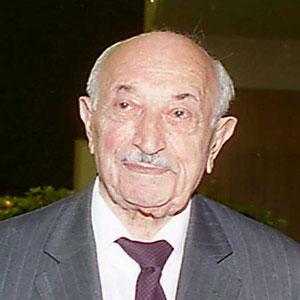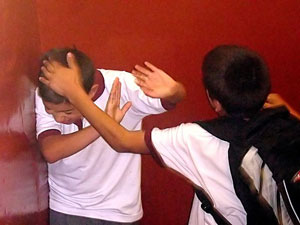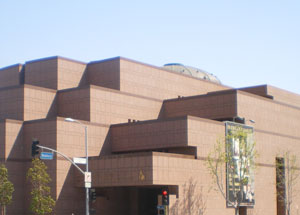
If ever in Los Angeles, stop at the Museum of Tolerance (MOT), founded by famed Nazi hunter Simon Wiesenthal. This interactive, high-tech museum isn’t a typical museum filled with fixed panels and artifacts. Museum Director Liebe Geft describes it as “an immersive, interactive experience that spotlights history, lets us bear witness to history and explore where these dynamics of prejudice, racism, discrimination, and bigotry still play out in everyday society.”
Soon after it opened however, the MOT found itself in a dilemma. “The museum is extremely powerful, immersive, [with] evocative exhibits, [but] not appropriate for young children because of the graphic nature of the material,” says Geft. “But at the same time, we realized that teaching the lessons of tolerance must start at a very young age before latent and incipient prejudices crystallize into lifelong hatred, and that there must be an age-appropriate way to introduce these topics and themes in a way that is relevant, meaningful, and empowering for younger students.”
In response to those needs, MOT created the Steps to Tolerance program, geared toward fifth and sixth-graders. In this two-and-a-half hour program, students handle museum artifacts, meet and hear the testimony of a Holocaust survivor, and view short films on genocide and bullying. Children receive a journal, titled “My Steps to Tolerance Notebook,” that contains, among various items, definitions of roles in intolerance such as perpetrator, bystander, and target. Perhaps most importantly, a discussion takes place on how the phenomenon of bullying relates to the persecution of various peoples throughout history. “We’ve often heard reports that it begins to influence the ethos of the room, the dynamics of the class,” says Geft. “So it’s important for us to know that those conversations continue for a long time after the visit.”
Especially poignant is when the children meet with a Holocaust survivor. “These young people connect with now-elderly people, and their questions are respectful but pointed and filled with curiosity and a desire for understanding,” says Geft. “One of the ladies who works at the museum who was in Auschwitz has the numbers stamped on her arm, and the students are mesmerized by it, but still very, very respectful of it.”
 “For them, I thought it might not be so easy to connect [intolerance] with bullying in general and the Holocaust, but I always ask a question before I start speaking about the bullying issue, and I ask why do we talk about the Holocaust and now suddenly about the topic of bullying? And they always get it,” says Tina Schuessler, an intern from Germany who studies the Holocaust and is a tour guide for the Steps to Tolerance program.
“For them, I thought it might not be so easy to connect [intolerance] with bullying in general and the Holocaust, but I always ask a question before I start speaking about the bullying issue, and I ask why do we talk about the Holocaust and now suddenly about the topic of bullying? And they always get it,” says Tina Schuessler, an intern from Germany who studies the Holocaust and is a tour guide for the Steps to Tolerance program.
For children in third grade and above, the Finding our Families, Finding Ourselves after-school program explores the history of immigration in the United States, in addition to having students research their own family histories in the museum’s computer lab. Well-known individuals such as Billy Crystal — who, alongside his wife, directed the project for several years — Maya Angelou, Carlos Santana, and Michelle Kwan have displays telling stories of their own family history.
“It’s done against the metaphor of a patchwork quilt, illustrating that we are all part of this American patchwork quilt, each bringing a unique, distinct, and important piece to the quilt, that would not be the same quilt if those pieces were not included,” says Geft. “If we start to excise parts and pieces we run the risk of the whole quilt becoming unraveled. Therefore, America is not this hodgepodge melting pot where we lose our individual identities as we morph into a homogenous glob, but rather, we retain that which is different, special, and unique to all of us. And at the same time, we literally live together [in] a society where we all belong, and engage in civic participation in community with unity, respect, [and] recognition.”
“[The museum] generates, I think, a lot of conversation,” says Mitchell Learner, owner of West Coast Connection and 360 Student Travel, who also runs a summer community service program for teenagers aged 14-17, which includes a visit of the Museum of Tolerance. “For some kids — I guess about 75 percent are Jewish — the Holocaust portion of the experience certainly strikes a chord…but even more so, the part about tolerance is something that teenagers experience everyday in school, and I think it offers a nice relationship.”
 MOT is always looking for new opportunities to make a difference in the lives of youngsters. In addition to Steps for Tolerance and Finding our Families, Finding Ourselves, they developed a program in conjunction with the Los Angeles Superior Court that trains teens to become adjudicators of bullying incidents on their school campuses, remedial programs for youngsters who’ve had trouble with the law, and a volunteer program at the museum called MOTivating Youth. Another exciting endeavor is bringing teenagers together from different parts of the world via live video conferencing for discussions on topics such as democracy and diversity. The museum also partners with the Go for Broke Educational Foundation, an organization dedicated to preserving the oral histories of members of the Japanese American 522nd Field Artillery Battalion in the U.S. Army, which liberated Jewish survivors of concentration camps during the Second World War. In early April, the museum hosted an event where young people from 11 schools were able to interact and hear the stories of Freedom Riders.
MOT is always looking for new opportunities to make a difference in the lives of youngsters. In addition to Steps for Tolerance and Finding our Families, Finding Ourselves, they developed a program in conjunction with the Los Angeles Superior Court that trains teens to become adjudicators of bullying incidents on their school campuses, remedial programs for youngsters who’ve had trouble with the law, and a volunteer program at the museum called MOTivating Youth. Another exciting endeavor is bringing teenagers together from different parts of the world via live video conferencing for discussions on topics such as democracy and diversity. The museum also partners with the Go for Broke Educational Foundation, an organization dedicated to preserving the oral histories of members of the Japanese American 522nd Field Artillery Battalion in the U.S. Army, which liberated Jewish survivors of concentration camps during the Second World War. In early April, the museum hosted an event where young people from 11 schools were able to interact and hear the stories of Freedom Riders.
Overall, the museum recognizes that it is the children and teens of today who will inevitably shape the future, and that is the motivation behind teaching the lessons of tolerance. “We continuously look for new opportunities to create meaningful experiences for young people,” says Geft. “To the extent that we can engage young people, inspire them, educate, enlighten, and motivate them, that is really where we invest our energies as much as we possibly can.”
For more information, visit www.museumoftolerance.com.
